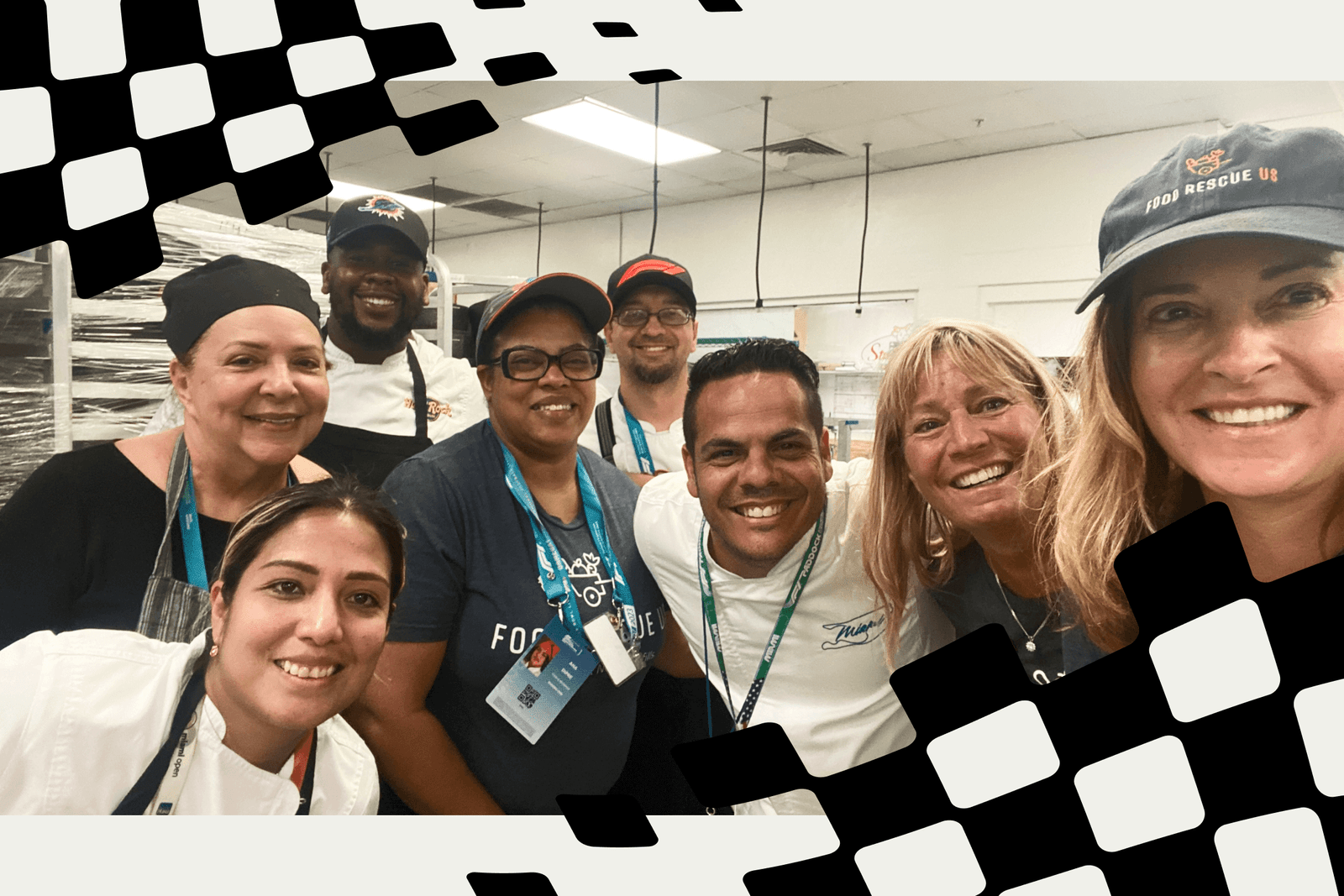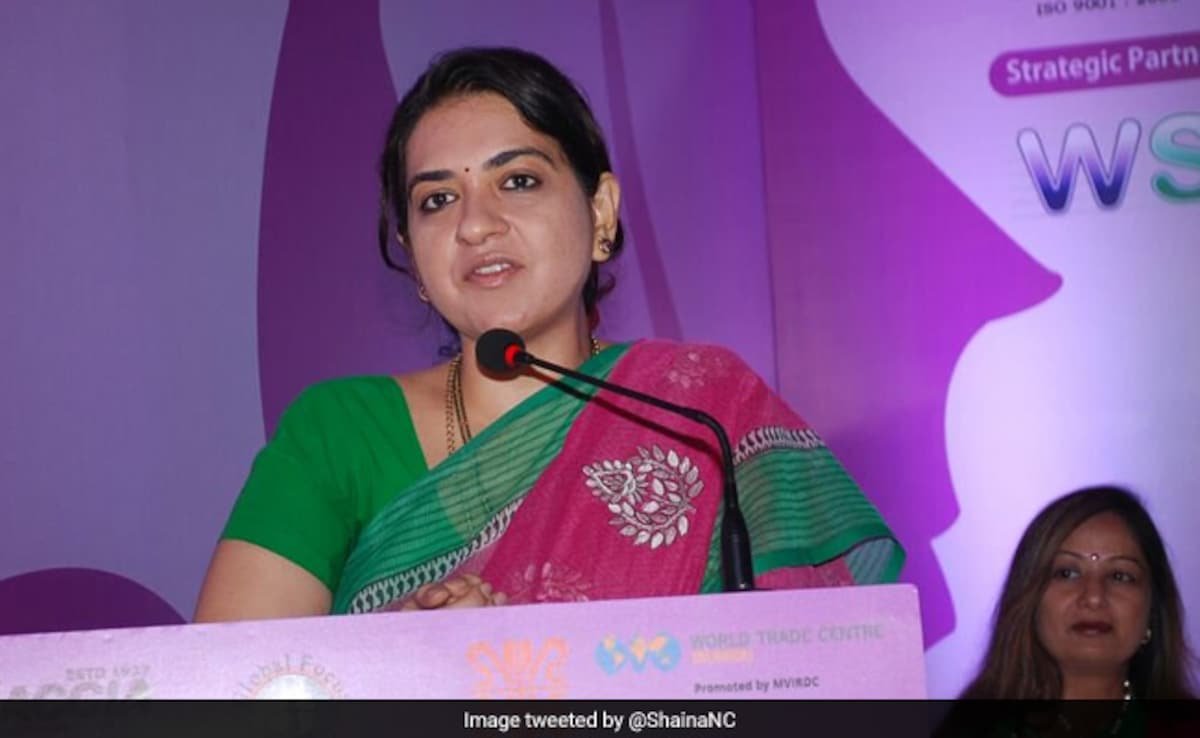
MIAMI GARDENS, Fla. — A Formula One grand prix weekend is like a Super Bowl-caliber event in Miami – especially when it comes to the food.
Extravagant hospitality packages are created, award-winning chefs cater the weekend to bring the flavor of South Florida to F1, and VIPs flood the paddock. Over the years, the likes of the Williams sisters, David Beckham, Ed Sheeran, Michael Jordan and Paris Hilton have walked through the Hard Rock Stadium campus. Roughly 242,000 people attended the inaugural Miami Grand Prix, but the chefs’ teams for the restaurants working the event didn’t know quite what to expect when preparing the meals across the campus.
Thousands of pounds of food are made over the three-day weekend, ranging from simple ingredients like common produce to filet mignon. By the end of the 2022 weekend, approximately 90,000 pounds of food were left over, which equates to roughly 75,000 meals — a significant amount of food that needed to be rescued.
Food insecurity is rising in the United States, particularly in South Florida. The Office of Disease Prevention and Health Promotion defines the term as “a household-level economic and social condition of limited or uncertain access to adequate food.” Across Broward, Miami-Dade, Palm Beach, and Monroe counties, nonprofit Feeding South Florida found that more than 1.2 million people faced food insecurity on Thanksgiving 2023.
Enter Food Rescue US — the middleman and solution to F1’s food surplus situation in Miami. The nonprofit has volunteers who pick up the viable remaining food (such as food not used for buffets) and deliver the surplus to local agencies, like homeless shelters and food pantries. But if the food weren’t rescued, it likely would end up in landfills. The South Florida office has worked with Hard Rock Stadium for several years, delivering food surplus from college and professional football games to local organizations.
When F1 came to town, it was natural for the Food Rescue US – South Florida branch to collaborate with Hard Rock Stadium again.
“I remember them calling me saying, ‘So Ellen, we just got F1,’” said Ellen Bowen, the site director. “‘Think of the Super Bowl times three.’”
How it works
The food rescue mission doesn’t commence until after the grand prix weekend is over.
During the race’s first year, the volunteers spent three days gathering and delivering food surplus, which she described as food that can be sold or served but doesn’t leave the kitchen. In 2022, this ranged from pulled pork to veggies and pastries. “It was staggering,” Bowen said. “It took us three days to do it with about a total of 125 volunteers that were working in basically four-hour shifts.”
It’s impossible to save 100 percent of the extra food — for instance, media catering is buffet-style. But rescuing 90,000 pounds in year one requires significant effort, not just by providing meals but also by keeping the food out of the landfill.
“Miami and Broward County are running out of landfill space. The incinerators that we’ve used, it burned down last year. So we’re as an organization, and I think, as a county, really trying to find a way to reduce the actual waste,” Bowen said, adding. “The organizations we feed, they’re homeless shelters, they’re community-based organizations that service underserved communities, whether it’s through a church or community center, we put food into community refrigerators. So all of this food that we rescue goes to people that maybe never had a filet mignon before, or certainly people that really need this good, healthy, nutritious food.”
Year two involved fewer volunteers as the existing kitchen staff brought in more employees to help store the food, leaving Food Rescue US – South Florida to coordinate the transportation. With one grand prix weekend under their belts, the kitchen crews knew what to expect, and the food surplus dropped — but it “was pretty comparable to the Super Bowl in terms of quantity.”
Bowen estimated that year two resulted in 60,000 pounds of food, which is 50,000 meals; in 2024, the number totaled 65,000 pounds, roughly 55,000 meals. (Miami GP managing partner Tom Garfinkel estimated the 2024 race this past weekend brought in 275,000 fans.) According to the U.S. Department of Agriculture, a meal is approximately 1.2 pounds, so you divide the weight of the food by 1.2 to determine an estimate of its number of meals.
Over the years, the process essentially has remained the same (but was a day shorter this year) — prepared food on day one, leftover prepared food, salads and produce, as well as unused items like plates and cups on day two, and condiments and bread on day three. In 2024, the operation took only two days and seven trucks to the six different Miami-Dade and Broward Counties shelters. Bowen said: “If there is a giant can of tomato sauce that they didn’t use, like bulk quantities, we take that also because if you think about it, what happens once (the) grand prix is gone, that site shuts down, and they don’t want to be storing things that might possibly go past expiration.”
Food Rescue US – South Florida does the same during football season, like when the Dolphins don’t have a home game for two weeks. Bowen said: “It’s very much dependent on, can they use it soon? Can they freeze it and then use it? Or is it something that they just don’t anticipate using in enough of the near future to hold on to?”
The food requirements
They can’t rescue all of the food on the campus, either.
Food Rescue US won’t accept hot food, Bowen said. It needs to be refrigerated and cooled down, so they don’t begin their F1 operations until the Monday after the race weekend. The food also must be stored in sealed containers and labeled with the food item and the date it was packed.
However, the organization and chefs also adhere to other guidelines, like ServSafe (which provides alcohol and food safety training) and the Bill Emerson Good Samaritan Food Donation Act. This federal law essentially “allows for any food donated in good faith to be free of liability,” Bowen said.
When it comes to who receives the food surplus first, Bowen says she will “try and support the homeless shelters first because they have the capacity to store and freeze trays and trays and trays of food.” She primarily works with four larger shelters, all of which can reheat the food and safely handle large quantities of food.
The remaining food will be divided among smaller food pantries, which typically don’t have full kitchens like homeless shelters or the ability to reheat the food. They’ll often receive produce and nonperishables because these are “a little more shelf stable and can just be distributed as groceries.”
A look at the bigger picture
Food insecurity continues to be a worldwide problem, particularly since the COVID-19 pandemic. In Florida, there is limited affordable housing and prices for gas and groceries continue to rise, Bowen said.
“I think people that identify as food insecure now are maybe people that never identified as food insecure pre-COVID,” she added. “The statistics are staggering. Forty percent of all food is wasted. Yet I know in the state of Florida, one in 10 report going to bed hungry, and out of that, one in five are children. So we’re not doing a really good job of feeding our own population, and part of that is feeding them nutritious food, too.”
Thus, Food Rescue US – South Florida focuses on bringing the food surplus to underserved communities, specifically food deserts. These areas lack or have limited access to healthy and affordable foods. Bowen said, “They’re shopping at the local corner bodega. They don’t have a Trader Joe’s or Whole Foods in their backyard. They have a low-end supermarket or a bodega where they shop, and many of them that they’re on assistance, have to stretch those dollars.”
Miami neighborhoods categorized as pockets of food deserts include Little Haiti, Little Havana, Liberty City, Overtown, and Miami Gardens, where Hard Rock Stadium is located and where the grand prix is held.

Rescuing food surplus not only helps feed underserved communities. It also helps lessen the amount of food waste in the landfills, ultimately dampening the long-term effects of climate change.
The U.S. Environmental Protection Agency (EPA) has determined food waste significantly contributes to climate change. According to a recent report on quantifying methane emissions at U.S. landfills, the researchers found “an estimated 58 percent of the fugitive methane emissions (those released to the atmosphere) from municipal solid waste landfills are from landfilled food waste.” When organic waste (which includes food waste) breaks down, this turns into methane, which NASA has labeled as “a powerful greenhouse gas” that “is the second-largest contributor to climate warming after carbon dioxide (CO2).” Methane also comes from other sources, like fossil fuels and agriculture, but diverting food from landfills can help reduce the impact on the climate, the evidence suggested from the EPA’s research.
F1 continues to say sustainability is a high priority for the sport, striving to become net zero carbon by 2030. Last month, it released its Impact Report, reporting that it reduced its carbon footprint by 13 percent between 2018 and 2022. Working with food banks and other charities is a common practice for most F1 tracks, including the Las Vegas Grand Prix, which donates rescued food surplus to help local communities.
“Whatever little bit we can do, and anyone can do,” Bowen said, “will contribute to actually reversing climate change by keeping food out of the landfills.”
Top photos: Ellen Bowen/Food Rescue US-South Florida





